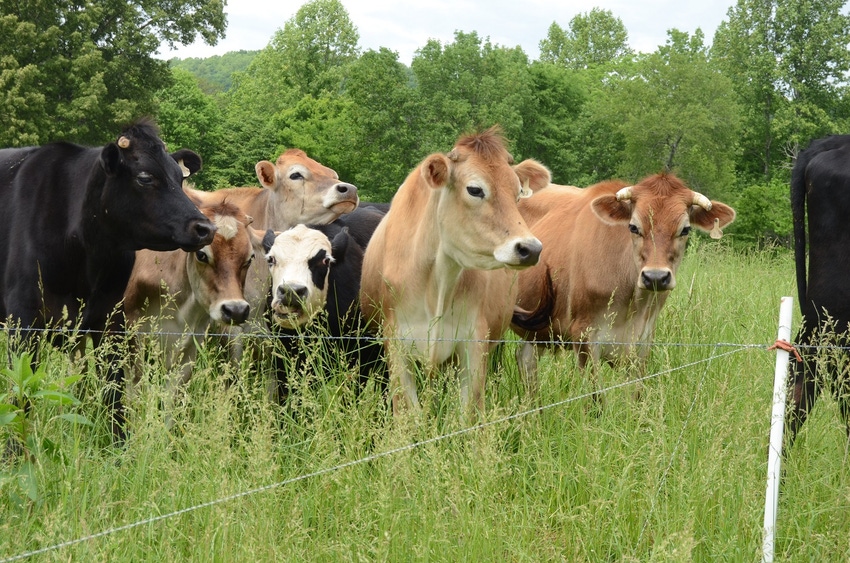
As I write this blog, it's July and I am sitting at headquarters looking at three very different pastures.
One belongs to us that we manage with boom-and-bust. We grazed the pasture in May and early June. It is green and thick and growing and presently boot-top to knee deep. Some spots are up to your waist.
To the east my neighbor’s pasture is stem-covered and brown, as it is dominated by KY-31 fescue.
Looking south at my other neighbor’s pasture it is mostly short and green with the wet ground going to briars and brush and wetland trees. He has been unable to clip it due to the high moisture of the past couple of years.
None of the three of us cut hay but the neighbor to the east leased his place a few years back and there were four cuttings removed. The salt fertilizer that was spread in the mid-spring combined with the haying pushed the place to KY-31 dominance to a bigger degree than was the case previously. boomsedge grass quickly follows such management practices in our area.
Our farm has been managed away from fescue for more than 15 years. Since 2008 it has been managed with complete plant growth and recovery before high-density grazing with animal densities averaging something over 70,000 pounds per acre. (This is what I call boom and bust.) We average close to 250 cow days per acre per year. This equals approximately 3.75 tons of dry matter that is 85% recycled into manure and urine (soil food) by our cattle on every acre. Another 1.5 to 2 tons of forge is trampled or left standing.
If a cow day averages a value of $1.50 per day it is not real hard to compute that our pastures are netting close to $300/acre per year. A fifteen-minute quarter acre daily move equals $75. Bigger moves with bigger numbers result in the magic of duplication and pays a bunch better with very little added work.
My neighbors buy in and feed hay for 140 days annually. Their pastures produce about a ton (2,100 pounds) of cattle feed or 70 cow days per acre or may $105 per acre. They can lease to the row crop or green-bean producers for $150 per acre per year.
Our agricultural philosophy is totally different from that of our neighbors and most of America. Most of our neighbors and most beef producers in our country are comfortable with their present land management practices and likely will not make major changes. But the experts tell us that 50% or more of this land will change hands in the next 20 years.
The industrial model of cattle production has taken out and/or failed to restore a huge amount of ground around the world. In the past most of us have spent our time and money being reactive rather than proactive. We now have the knowledge and facts to heal the soil-plant-animal complex and heal a bunch of people with our end product. In the midst of all this we can eliminate most weather-related losses (both flood and drought). Economics of production can change dramatically and be greatly stabilized.
The truth is that our product could and should be priced according to its nutrient content and density. Our agricultural philosophy will make a giant step forward while these changes take place. The future will be interesting and hopefully fun. I plan to enjoy the ride.
About the Author(s)
You May Also Like






